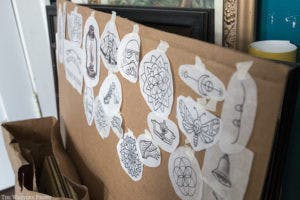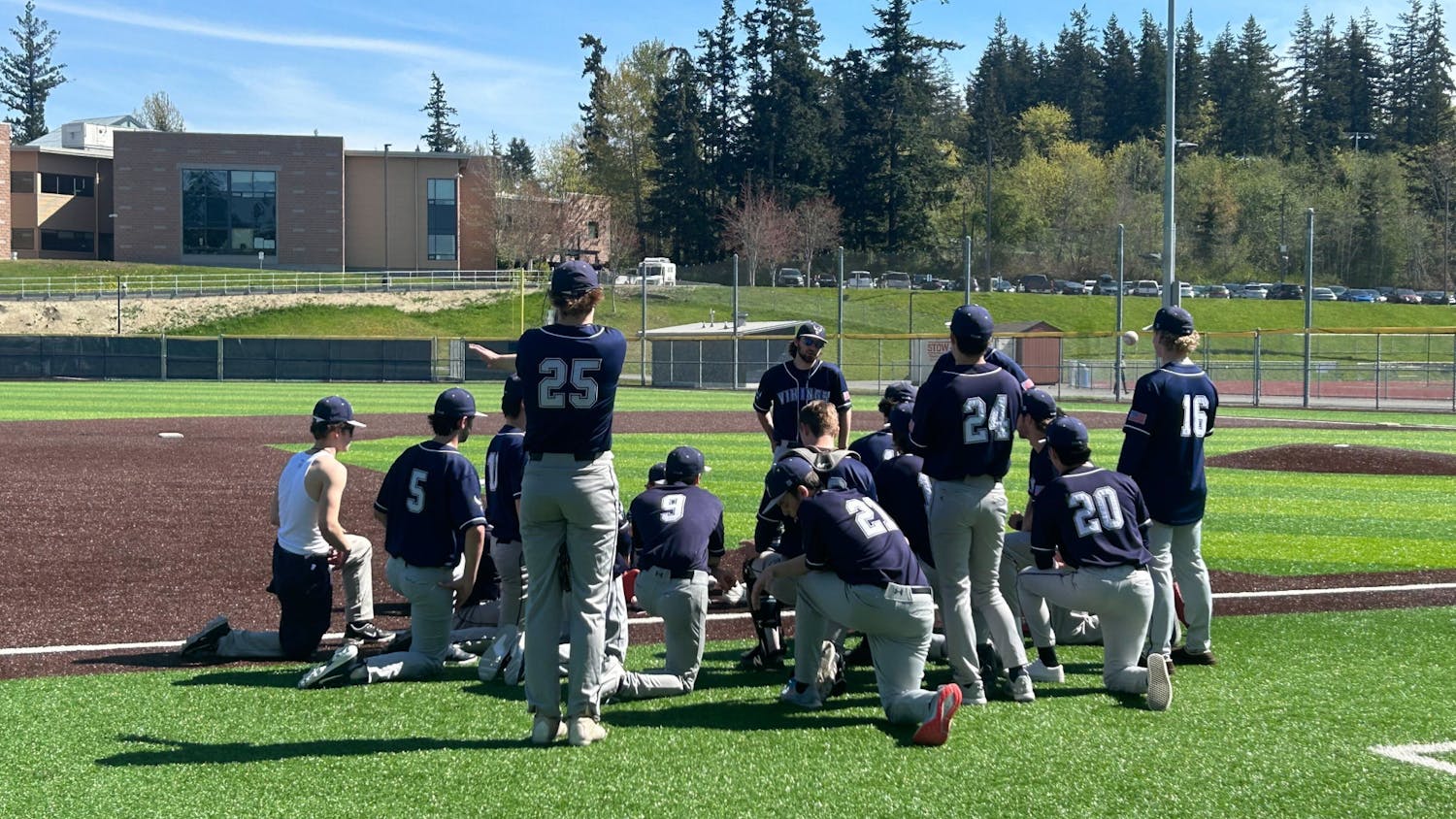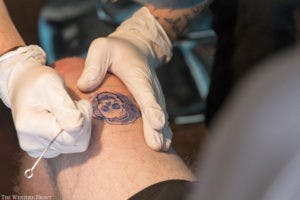
Vibrant artwork covers the walls of the artist’s domain. Sketches of tattoo designs are haphazardly pinned to any surface that will hold them. The customer, a canvas for their artist, sits and begins to uncover the space where blood will rise and ink will flow. There, from the intermixing of blood, ink and steel, an art emerges worthy of permanence.
In two rooms miles apart, two artists of different backgrounds carefully assemble their tools. Bottles of ink sit in rows alongside sterilized needles and machines that form to make their permanent paintbrush. The professional’s station is lined with photographs of family. The amateur puts out his cigarette on an orange peel sitting on his nightstand. Giant sculptures of Star Wars characters and colorful canvases adorn the professional’s studio. In the amateur's room, the aesthetic is vinyl records and sneakers.
“Scratchers” choose the underground and unlicensed path to tattoo artistry, working out of bedrooms or kitchens. They aren’t always well-liked in the professional world of tattooing.
"Conor"
Conor is an unlicensed tattoo artist graduating this spring from Western (Since unlicensed tattooing is illegal, we’ve agreed he’ll go by his first name). Conor understands why scratchers have the reputation they do.
"It's still something that gets a lot of hate because of the seriousness of the business and industry for professionals," Conor said. "It is a lifelong trade that people master, and I fully understand that, but everyone has to start somewhere."
The dynamic between scratchers and professionals is one ironically of both respect and hostility. Two artists of the same trade, operating in different spaces under different laws, not necessarily competing but coexisting in an artistic ecosystem. Every tattoo artist has to start somewhere, but some take different turns at the initial fork in the road.
Conor started scratching a year ago when he bought his tattoo pen off a friend.
"I've been drawing my whole life," Conor said. "I grew up doing a lot of graffiti, so that's how I got into art and lettering."
Working out of his bedroom, Conor estimates he’s given around 75 tattoos to friends and peers, four of them are shown above.
“I was lucky because I had the homies who were down. They knew that I was an artist, and they trusted me,” Conor said.
Conor understands his customers still have hesitations about getting tattoos done in his room versus a professional’s shop downtown, but he reassures them everything is clean.
"I let them know that a big part of my tattooing is how I take the sterilization and the whole process very seriously."
Safety is a major concern for tattoo artists. Working with blood and needles means artists and customers alike risk blood-borne diseases like tetanus, hepatitis B and hepatitis C, according to Mayoclinic.org.
Besides health concerns, getting a tattoo can be risky for the same reason it’s so cool: it’s permanent.
Conor said he ensures the design’s is within his skill level and treats the permanence of the art seriously.
"I respect that it's going to be on their skin forever, and I want it to look as good as possible, so I'm not going to take on a tattoo that I don't think I can handle," Conor said.
Not all underground artists take the same precaution, he said.
"That's another thing about some scratchers is they go for tattoos that they can't really handle," Conor said.
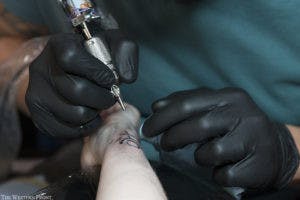
Yasmine
Professional artist Yasmine Zouhby has worked at Old School Tattoo and Piercing for six years. She said customers should be wary of tattoos done for cheap by “kitchen wizards” – another term for scratchers – because they can be done poorly and may require removal or cover-up for even more money than the tattoo could have originally ended up costing had they got it done in a shop.
"Laser removal isn't always 100 percent, and generally, cover-ups have to go about three times the size of the original one,” Zouhby said.
"Billy Frank"
Though hostility exists between amateurs and professionals, another underground tattoo artist, known to us by the pseudonym Billy Frank, respects and even aspires to train under professionals in apprenticeship.
"I think everybody who basically tattoos unlicensed and underground has super respect for most artists," Frank said. “And that's not necessarily 100 percent, but I know that I personally have huge respect for artists that work out of shops.”
Frank scratches "stick n' poke" tattoos, done the old fashioned way with one long piece of sterilized steel. The first tattoo Frank ever did was on himself, a musical note adorning his forearm. A handful more would join it before Frank started putting ink on others' skin.
Conor practiced the same way, putting his own skin on the line to gain confidence doing the same for others.
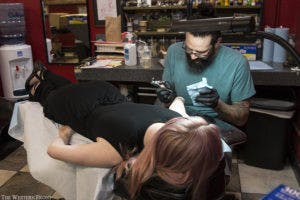
Paul
Paul Foertsch is a professional tattoo artist and the owner of Old School Tattoo and Piercing. Foertsch has been tattooing since the turn of the century, starting out as an apprentice over 16 years ago.
"I always wanted to do something with art, but never really knew what," Foertsch said.
After realizing his path didn't include school, Foertsch said he felt lost until one day he happened upon an ad for a local tattoo shop in search of apprentices.
"I had some crazy dreams about it that night, and I got up the next day and put a portfolio together," Foertsch said.
Professional tattoo artists take on apprentices and pass down the knowledge of the trade in exchange for payment.
“It's essentially like tuition,” Foertsch said. “You pay your mentor to teach you how to tattoo.”
Working closely with his mentor, Foertsch began tattooing using water instead of ink, followed by tattooing on the heels of his friend’s feet and even on grapefruits before moving onto real skin. A lot of the work involved in the apprenticeship didn’t even involve actual tattooing, Foertsch said.
"[It was] a lot of drawing and a lot of tracing. Tracing, tracing, tracing, tracing," Foertsch said.
On top of practicing, Foertsch helped around the shop by doing maintenance tasks like cleaning the floors and dealing with customers.
"You do a lot of the bitch work," Foertsch said.
Foertsch’s apprenticeship lasted around eight months until he was accepted to work in the shop. He worked for a year before leaving to work solo.
He finds admiration for underground artists’ drive to be self-taught.
"It's an easy thing to be condescending about," Foertsch said. "There's scratchers, there always were scratchers and there probably always will be scratchers. "
